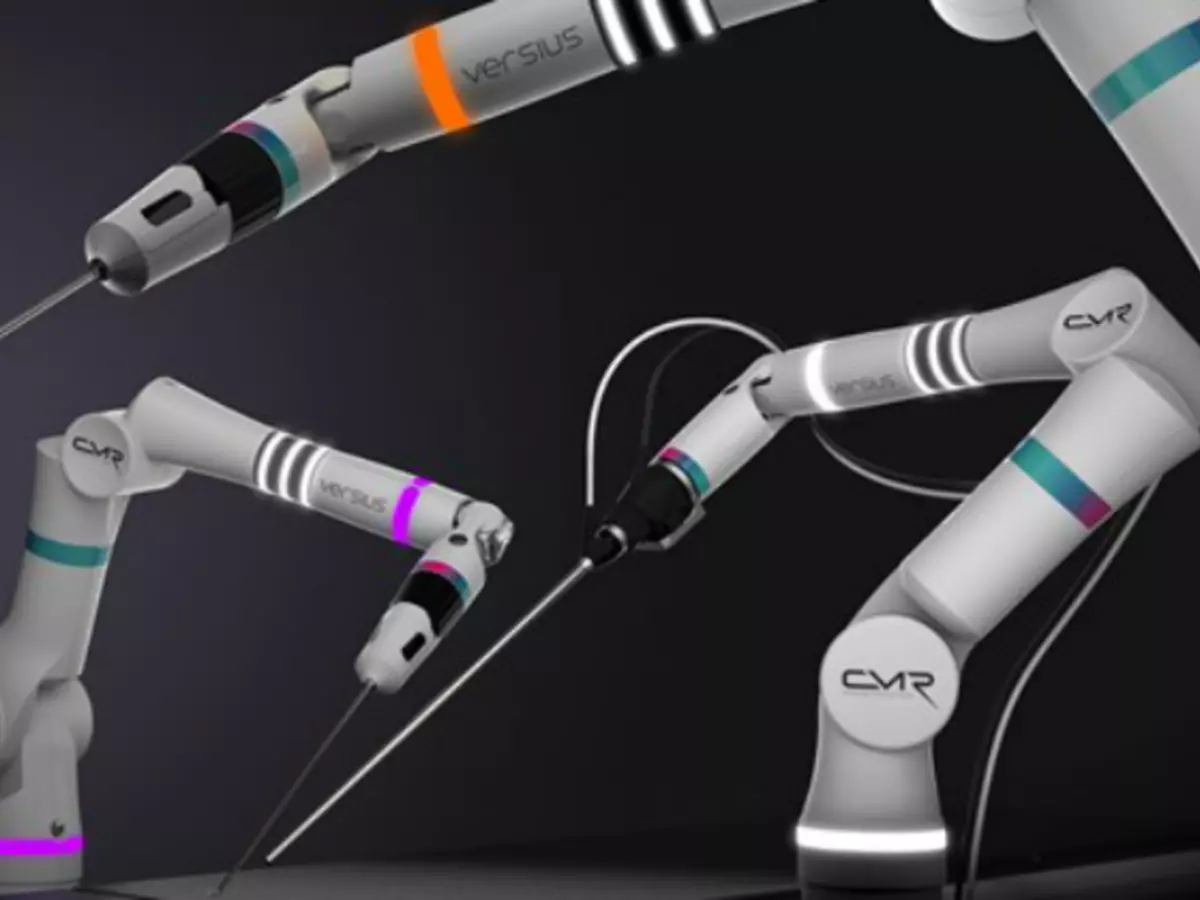Researchers Have Developed The World's Smallest Surgical Robot Arm, Thanks To Smartphones!
The device could greatly speed up the rate at which surgeries are carried out, as well as surgeons' efficiency,

A team of British scientists have developed the world¡¯s smallest surgical robot, one that could change the face of medicine forever.

Image courtesy: Cambridge Medical Robotics
Developed by a team of 100 scientists and engineers in Cambridgeshire, the robotic arm has been specially designed to conduct keyhole surgeries, using technology borrowed from mobile phones and the space industry.
Called Versius, the device mimics the movements of a human arm and can be used for a wide range of keyhole surgeries. This kind of operation involves making a series of tiny incisions in order to avoid the risks of traditional open surgery, as well as improve the patient¡¯s recovery time.
In this case, Versius can supplement a traditional surgeon in order to improve the accuracy and reduce the chances of a slip up. The surgeon controls the arm via a 3D screen within the operating theatre. While surgical bots already exist, this one takes up a third of the space required by existing models, as well as being easier to use, according to the Cambridge Medical Robotics team.
¡°Having robots in the operating theatre is not a new idea,¡± the company¡¯s chief executive, Martin Frost, said. ¡°The problem at the moment is that they are phenomenally expensive ¨C not only do they cost ?2m each (approximately Rs 16.52 crore) to buy, but every procedure costs an extra ?3,000 using the robot ( Rs 2.5 lakh) ¨C and they are very large. Many hospitals have to use the operating theatre around the robot. Their size can also make them difficult for the surgical team to use.¡±
One major benefit to the Versius over a human surgeon is its utmost precision. Not only can it mimic a human arm¡¯s movement, but inbuilt technology can also detect just how much force needs to be applied when the instruments are inside the patient.
The new bot will launch next year, and CMR expects surgeons to be trained and practiced enough to begin using the devices by the end of 2018.
